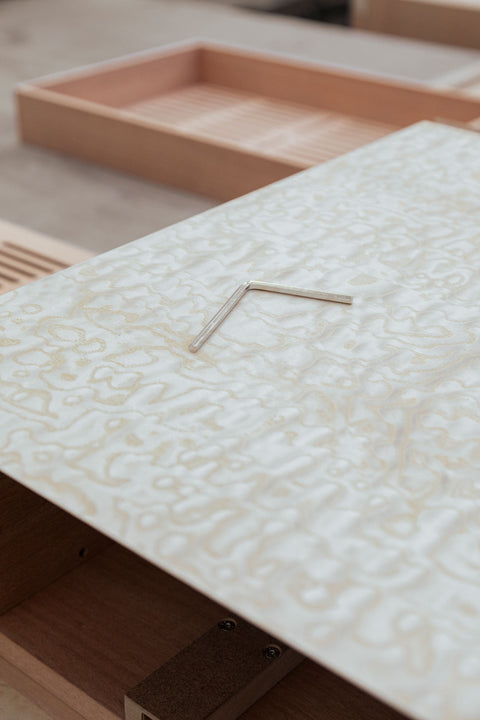Tamo: the most fascinating wood
The Tamo wood, native to Southeast Asia, particularly Japan and Korea, is considered one of the rarest and most fascinating figured hardwoods globally.
This plant is characterized by its small size and an irregularly growing trunk, making it easier to use burls, roots, and branched forks for decorative purposes. Its aesthetic and physical qualities make Tamo wood a highly valued choice.
It features a fine and uniform texture, with a coloration ranging from light beige to dark brown. The grain is distinctive and often showcases wavy streaks, giving it an elegant and refined appearance. Tamo is known for its absolutely unique grain and figure
Tamo wood is often regarded as a sustainable choice, as many of its varieties come from responsibly managed forests. In Japan, the logging of trees, including Tamo, is regulated by laws and regulations aimed at protecting forests and the environment. While it is not illegal to fell a Tamo tree, there are restrictions and necessary permits, particularly in protected areas. Additionally, Japanese culture promotes respect for trees and encourages the exclusive use of wood from dead specimens, reflecting a business philosophy that goes beyond regulations.
Tamo wood is renowned not only for its aesthetic characteristics but also for its functional properties:
WORKABILITY:
Tamo wood is renowned for its hardness, strength, and durability, making it suitable for a wide range of applications. Its workability is excellent, allowing for precise cuts and finishes. Additionally, the wood responds favorably to staining and polishing, enhancing its natural beauty.
STRENGTH
Tamo wood offers good resistance to compression and bending, making it ideal for structures that require robustness and durability. Its impact resistance is superior to that of many other woods, making it particularly suitable for applications that require wear resistance.
CURIOSITIES about TAMO WOOD
A legend says that the characteristic peanut-shaped figure found in high-quality Tamo varieties comes from tendrils wrapping around the trunk, limiting the flow of nutrients and causing irregular growth. Japanese growers are said to have used ropes to tie younger trees, successfully replicating this unique figure by the time the trees reached maturity.
Tamo ash veneer is available as an "option" for Bentley cars, further highlighting the appreciation and demand for this precious wood in the design and automotive industry.

















